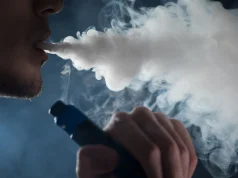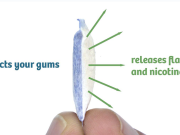A recent study published in the journal Tobacco Control suggested that young people who vape are at an increased risk of exposure to harmful metals like lead and uranium. The study, which examined 200 e-cigarette users aged 13 to 17, found that those who vaped more frequently had higher levels of lead in their urine compared to those who used them more sporadically. Specifically, those who used e-cigarettes for over 20 days in the previous month had elevated urine uranium levels.
Such reports add to the existing concerns about the popularity of vaping. A July study from the Centers for Disease Control and Prevention (CDC) found that over 1 in 10 Americans aged 18 to 24 use e-cigarettes regularly. While another recent study also based on CDC data, found that vaping rates among U.S. teens in grades 9 through 12 dropped to 5% in 2021, from a peak of 7.2% in 2019.
However, despite the decline the 2021 rate remains more than double the 2015 rate of 2%. Furthermore, the rate is only slightly lower than the 6% of adults who vaped in 2022. The study involved over 57,000 individuals and highlighted a shift in vaping trends between genders. While boys were more likely to vape in 2015, girls surpassed boys in vaping rates by 2021- a trend which raised concerns about nicotine addiction.
Meanwhile, the study, “National longitudinal tobacco product discontinuation rates among US youth from the PATH Study: 2013–2019 (waves 1–5),” which analysed data from the Population Assessment of Tobacco and Health Study (PATH), looking for patterns of quitting product use, attempts to quit and quitting rates among those who attempted to quit.
The compiled data indicated that between 2013 and 2019, rates of discontinuing tobacco product use among youth increased from 29% to 40% for cigarettes, from 39% to 60% for smokeless tobacco, and decreased from 53% to 27% for vaping products.
Social media remains a serious threat
While a study published in the respiratory journal Thorax suggests that increased social media use among children and young people is associated with a higher likelihood of both smoking and vaping. Analyzing data from the UK Household Longitudinal Study, researchers found that heavier social media use correlated with higher rates of cigarette smoking, vaping, and dual use. Notably, spending 7 or more hours on social media daily was linked to more than double the risk of smoking among 10 to 25 year olds.
The study underscored concerns about the influence of social media platforms, suggesting that exposure to advertising and influencers promoting smoking and vaping could contribute to increased usage. Additionally, social media use may foster addictive behaviours in teens and encourage transgressive activities like smoking and vaping. In line with previous studies, the researchers called for stricter regulation of online advertising and algorithms targeting underage users to mitigate these risks and promote online safety and child protection.
The analysis identified five themes: Secrecy and surveillance at school, Social pressures and positionings, Online omnipresence, (Un)restricted access and mobilities, and Re-thinking school-based vaping education. The study revealed that vaping exposure is deeply embedded and normalized in the everyday lives of Canadian teens, despite recent regulations.
This study reiterated how vaping is pervasive at a micro scale, ingrained in routines like social media use. The “stealth” nature of vaping practices contributes to its integration into daily life. The study suggested that vaping prevention efforts should consider the mundane and proximal contexts of teens’ lives and avoid exacerbating social inequities. It also emphasized the need for empathy-driven prevention messaging and highlighted the importance of involving teens in research and intervention development.
NRTs for minors?
Interestingly, Public Health Wales (PHW) has just suggested providing minors addicted to vaping with nicotine patches, as a means of quitting. This recommendation comes amid rising concerns about addicted teens, many of whom struggle to go through the school day without vaping. While nicotine replacement therapies (NRT) are already offered to individuals over 12 who smoke, PHW proposes extending this to children dependent on vapes, alongside other support measures.
The UK’s National Institute for Health and Care Excellence recommends a 12-week limit on NRT treatment for children over 12. While vapes are considered lower-risk alternatives to cigarettes, NRT like patches are seen as safer and less controversial, falling at the lowest end of the nicotine product risk spectrum.
Striking a balance
Critics question where authorities should draw the line in harm reduction for youth. Some experts support NRT use in schools to manage withdrawal symptoms discreetly, highlighting that patches deliver nicotine more slowly than vaping or smoking, making nicotine cessation easier.
However, others argue against applying smoking cessation therapies to young vapers, fearing it could fuel confusion and ignorance about vaping. While other experts are concerned that addressing youth vaping may overshadow its benefits as a harm reduction tool for smokers, and caution against policies that might inadvertently increase smoking rates or harm overall public health. The proposal for NRT use among children also challenges longstanding beliefs about nicotine’s harm to adolescent brains.
In conclusion experts express mixed views on teen vaping. Some advocate for understanding and addressing the underlying causes of youth vaping, and emphasize the importance of harm reduction approaches over prohibition and punishment. Many tend to acknowledge that vaping is less harmful than smoking and can serve as a cessation tool for adult smokers. Yet they are still concerned about the rise in teen vaping, especially as they worry that nicotine addiction in adolescents can impact brain development and lead to long-term health issues.
Ultimately, tobacco harm reduction experts emphasize the need for strict regulations to prevent youth access while promoting harm reduction strategies for adult smokers. Overall, balancing the benefits of vaping for smoking cessation with the risks of teen addiction remains a critical challenge for public health policymakers.












